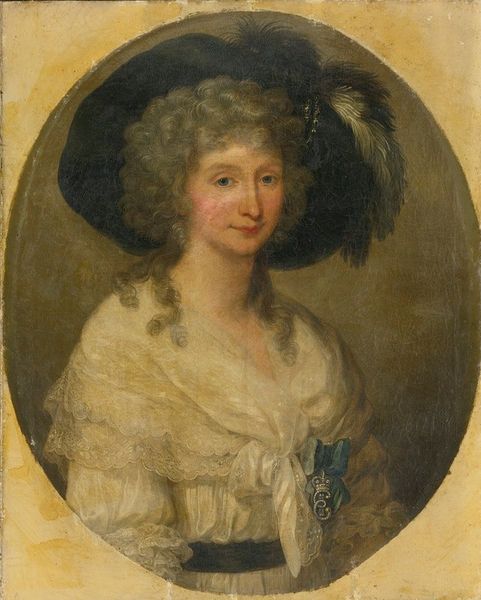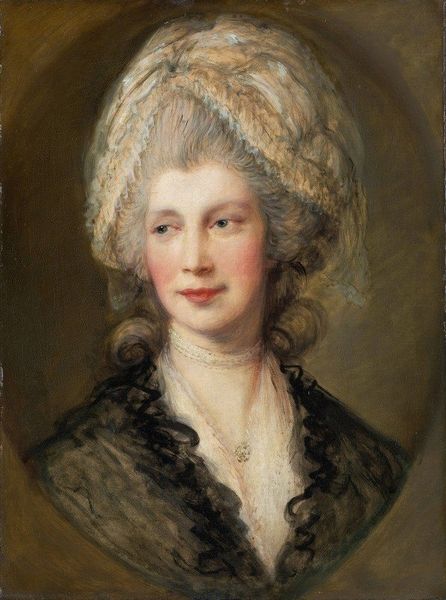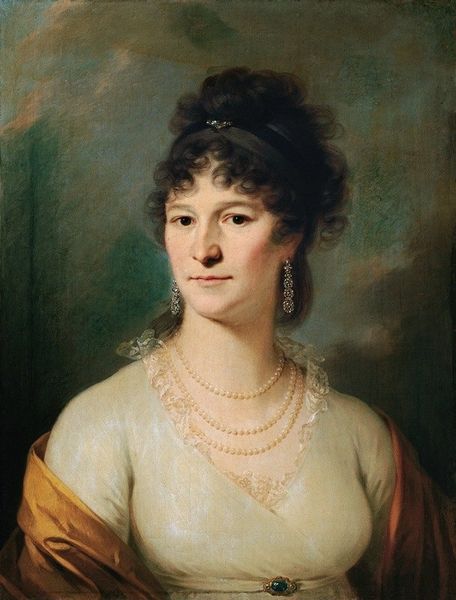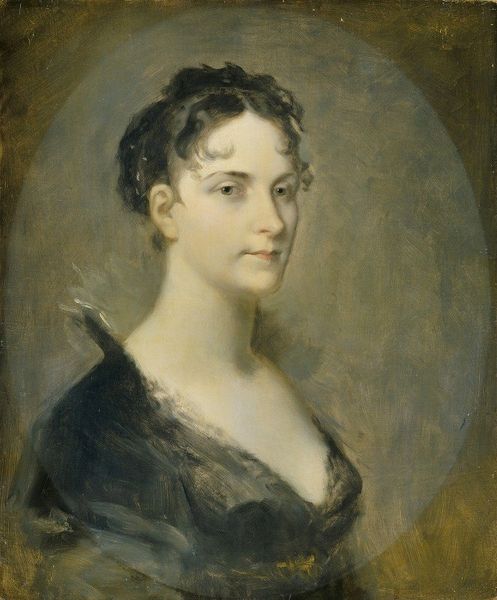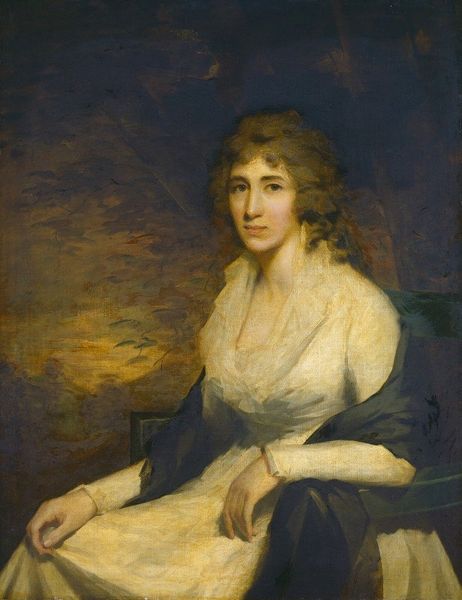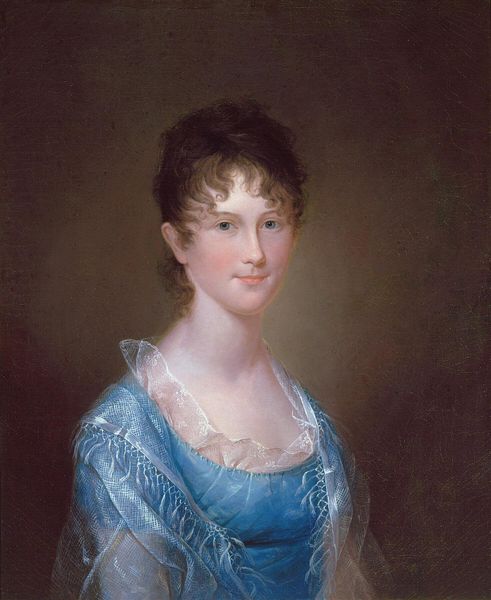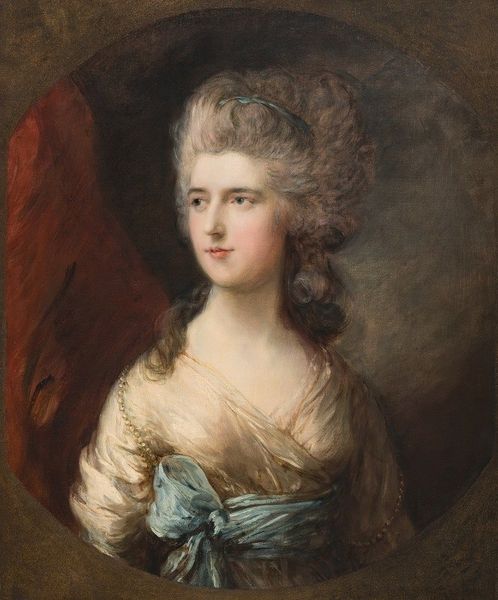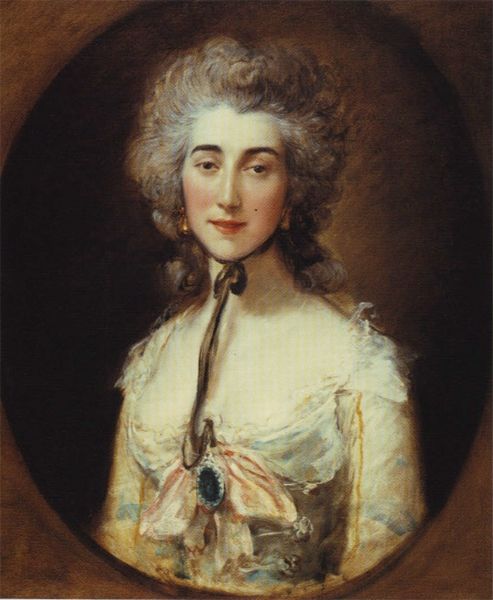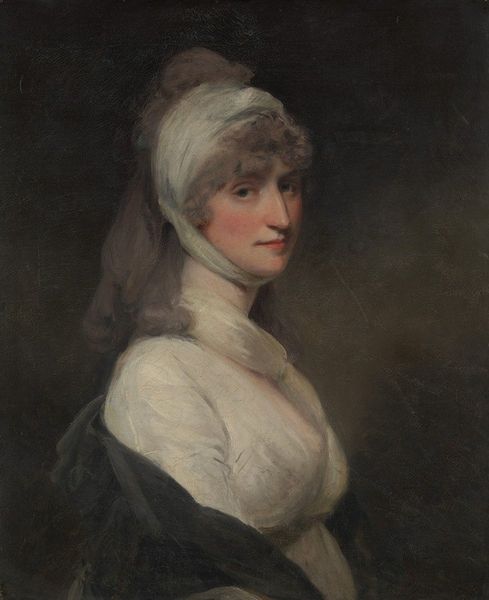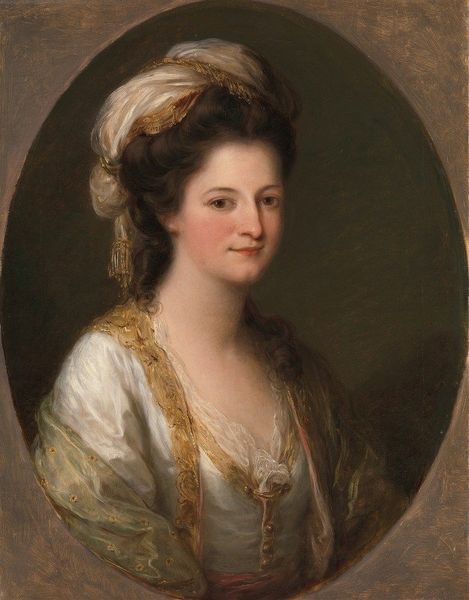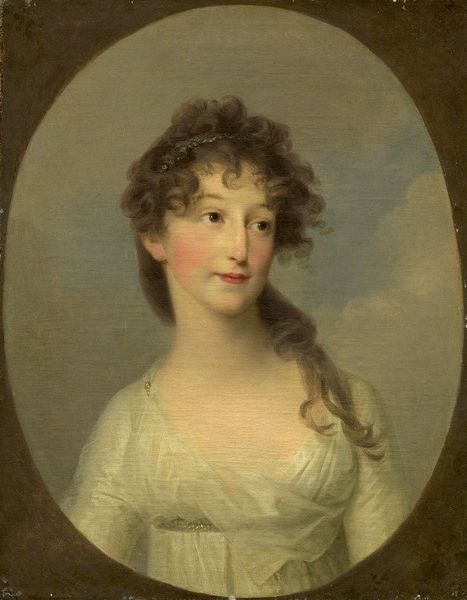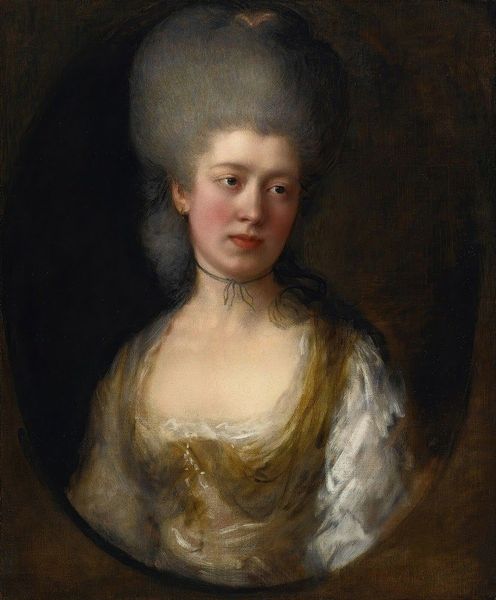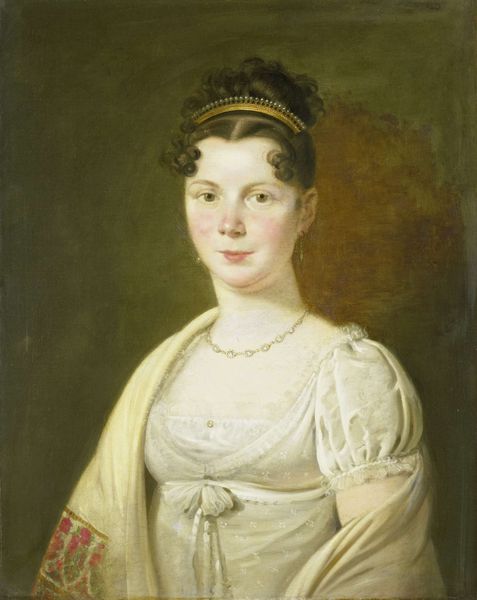
Copyright: Public Domain: Artvee
Curator: Gainsborough's portrait of Mrs. John Taylor, dating from around 1778, captures the sitter in a delicate, almost ethereal manner. Editor: There’s an undeniable softness here. The oval format, the pale palette...it evokes a sense of quietude and almost fragility. There is something romantic about the way Gainsborough depicted his sitter here, even when her pose is conventional to some extent. Curator: It's conventional in the sense that it’s a three-quarter length portrait, a popular format for displaying status in the late 18th century. Gainsborough was indeed at the height of his career then, and this painting exemplifies his ability to capture the grace and elegance sought after by the British elite. Editor: I’m particularly drawn to the textures. The translucent fabrics, the almost cloud-like treatment of her hair... it makes me wonder about the lived experiences of women within this social stratum, so rigidly defined by beauty and appearances. It is important not to shy away from conversations about race, class, and gender dynamics as well, and acknowledge their presence and absence. Curator: Absolutely. The portrait, commissioned perhaps by her husband, served as a declaration of their social standing. Her serene expression and elegant attire were crafted not only to record her likeness but also to communicate particular social and familial narratives. This painting reflects prevailing ideals of womanhood at that time, revealing their prescribed roles in society and at home. Editor: And let's not overlook the gaze; it’s averted, perhaps reflecting the limited agency women had within such structures. Although Gainsborough certainly elevates Mrs. Taylor here, one must look past her image and ask who has power over how women can be represented. This makes me question who is this made for, how she will exist in private versus in public as her persona is now solidified by this portraiture. Curator: It's a reminder that portraits of this era were tools used by powerful families, offering us invaluable insight into the political and social systems that held influence then. Gainsborough’s artworks provide us a snapshot into the museum of history, if you will. Editor: This image of a seemingly passive figure actually unveils so many narratives when questioned using intersectional frameworks; understanding this pushes viewers toward more nuanced perspectives about both history and portraiture as forms of representation. Curator: A painting is so much more than a pretty picture; art carries social meaning! Editor: Indeed, always more.
Comments
No comments
Be the first to comment and join the conversation on the ultimate creative platform.
